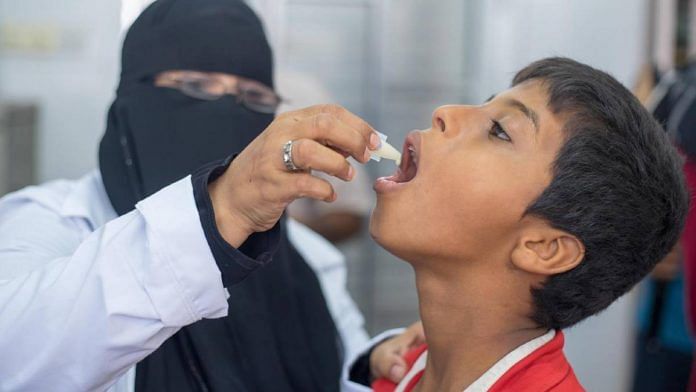New Delhi: In a first, scientists in Japan have developed a new vaccine ‘drink’ to protect against cholera, by grinding up genetically modified (GM) grains of rice. The first human trial has shown good immune response, according to a report in The Lancet.
Known as MucoRice-CTB, the Phase 1 clinical trial of the vaccine, conducted by researchers at the University of Tokyo and Chiba University in Japan, showed no obvious side effects. The trials were conducted between 23 June, 2015 and 31 May, 2016.
The MucoRice-CTB vaccine is stable at room temperature, making its distribution potentially easier than traditional vaccines that often need cold storage chains.
For the trials, 30 volunteers received a placebo, and three groups of 10 volunteers received a total of four doses of the vaccine, every two weeks. The three groups received vaccine doses of varying strengths, ranging from 3 milligrams (mg), 6 mg and 18 mg (per dose), respectively, the report published in The Lancet on 25 June said.
Tests conducted two and four months after receiving the last dose revealed that volunteers who responded (11 of the 30 volunteers responded) to the vaccine had antibodies specific to cholera toxin B (CTB). Participants who received a higher dose of vaccine were more likely to have CTB-specific antibodies.
“I’m very optimistic for the future of our MucoRice-CTB vaccine, especially because of the dose-escalation results. Participants responded to the vaccine at the low, medium and high doses, with the largest immune response at the highest dose,” said Hiroshi Kiyono from the University of Tokyo who led the MucoRice project.
The cholera bacteria is spread most often by drinking water contaminated with sewage. Without medical attention, cholera can kill in mere hours due to diarrhoea with severe dehydration.
Also read: When celebrating 50 yrs of 1971 War, don’t forget this life-saving sachet and Bengali doctor
How the drink scores over current vaccines
According to the research team, there are four modern needle-free cholera vaccines, all of which are administered orally but require cold storage. All of these are made from whole killed or weakened cholera cells.
The new cholera vaccine grows in genetically modified Japanese short-grain rice plants that produce a non-toxic portion of CTB that can be recognised by the immune system.
Researchers grew the rice plants in an indoor hydroponic farm, which ensured the vaccine remained uncontaminated and that the plants were isolated from the natural environment.
The plants produced the CTB subunit in their seeds, the edible grains of rice, and stored the antigens in droplets called protein bodies, with membranes made of fat.
“The rice protein bodies behave like a natural capsule to deliver the antigen to the gut immune system,” said Dr. Kiyono.
When the plants are mature, the rice is harvested and ground into a fine powder, then sealed in aluminum packets for storage. When people are ready to be vaccinated, the powder is mixed with about 90 milliliters of liquid and administered orally.
Researchers have only tested the vaccine using saline, but they expect it would work equally well with plain water.
Also read: R-value rises for 1st time in 2 months, increase likely driven by Kerala, Maharashtra
How it works
MucoRice-CTB enters the body through intestinal mucosal membranes (the body’s first line of defence against pathogens), mimicking the natural way of encountering and responding to germs. Stimulating the mucosal immune system produces two classes of antibodies that identify germs and target them for removal, IgG and IgA. Vaccines that are injected under the skin or into a muscle generally increase only IgG, not IgA, antibodies.
However, 11 of the 30 volunteers who received the vaccine showed low or no measurable immune response.
Extensive genetic analysis of all volunteers’ faecal samples showed that people who had a more diversified gut microbiome reacted better to the vaccine.
Since the study was conducted in a small group of volunteers, further research is likely to be required to understand how gut microbes affect the efficacy of the vaccine.
(Edited by Poulomi Banerjee)
Also read: ‘Youngest Leonardo da Vinci descendant’ born in 2020, study to decode his genius finds 13 others






